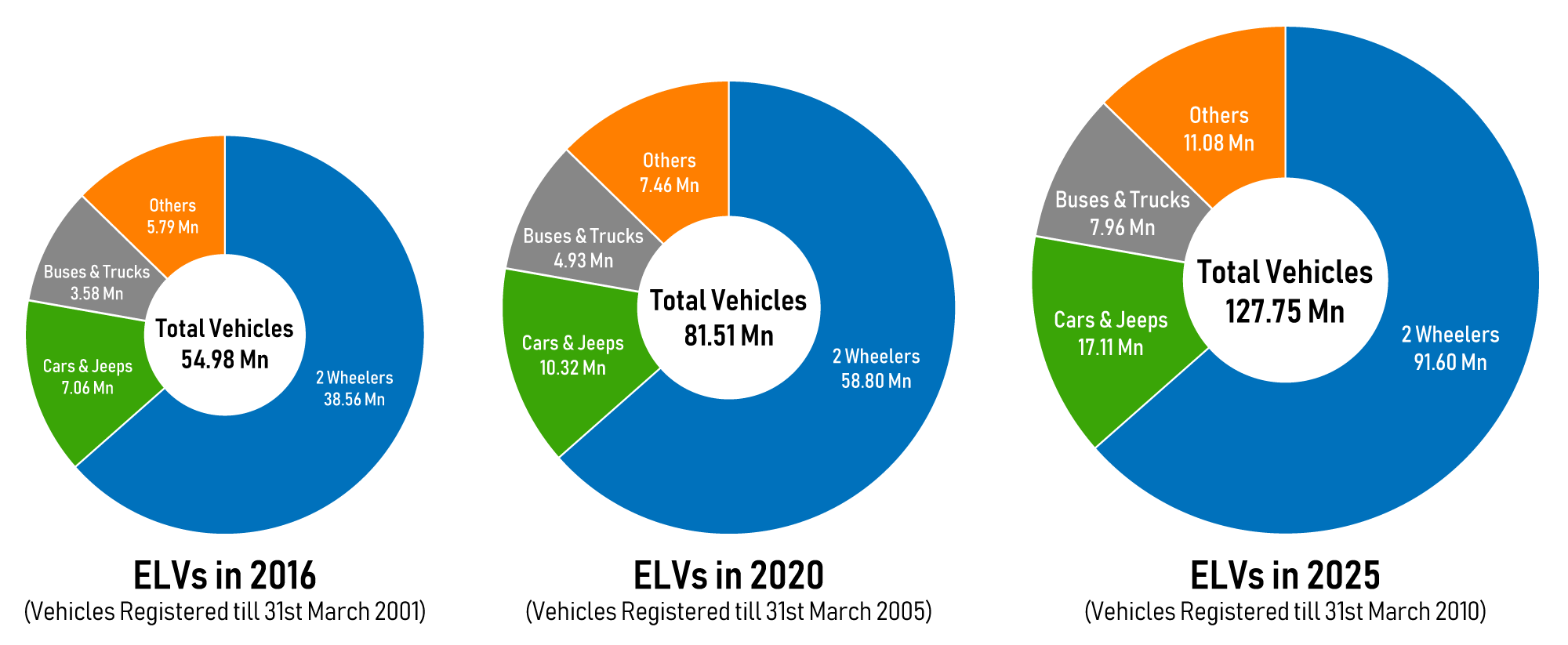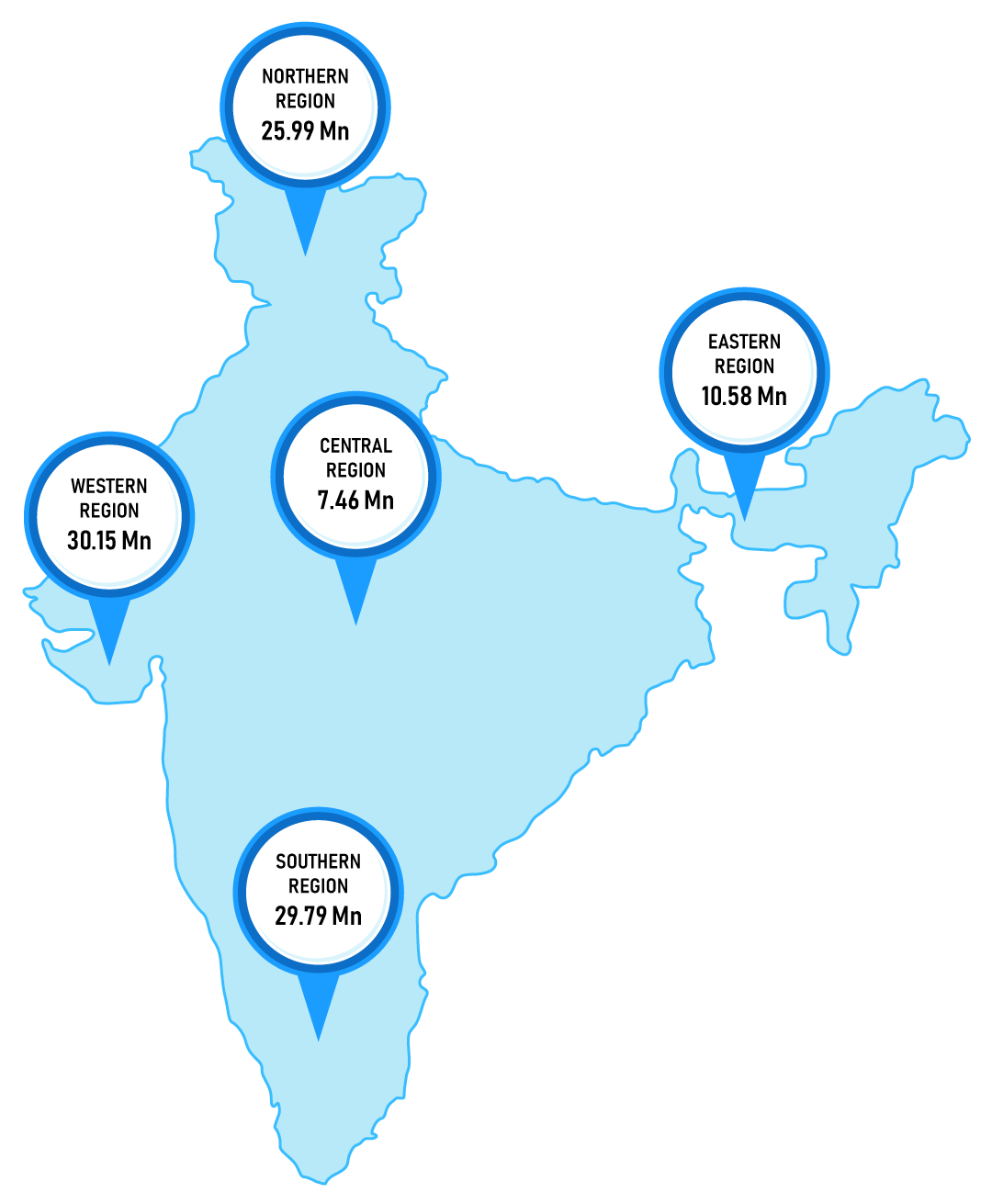Detailed Project Report for setting up of a Registered Vehicle Scrapping Facility (RVSF)
To discuss more about Vehicle Scrapping Project Report
Fill in your details below and we will get back to you!
The Indian Ministry of Road Transport and Highways on August 13, 2021, launched “The Vehicle Scrappage Policy”, a government-funded programme to replace old, rusty, smoke-coughing, deteriorating End of Life Vehicles, or ELVs, with modern & new vehicles on Indian roads. It envisages various incentives to owners of old vehicles in lieu of surrendering them for scrapping.
According to the policy, beginning 1st April 2023, commercial vehicles aged more than 15 years and passenger vehicles aged more than 20 years shall compulsorily have to be scrapped if they fail the fitness test at Automated Testing Stations (ATS). It is understood that the day this policy kicks in, nearly 127.75 million vehicles are expected to reach the end of life by 2025. This opens new avenues and huge business opportunities for auto recycling industry in India. Setting up a Registered Vehicle scrapping Facility (RVSF) for initiating the vehicle’s recycling value chain has lucrative business prospects and hold out exciting possibilities for Small as well as Medium (SME) Size enterprises.
With our in depth understanding of the domain and our expertise in carrying out feasibility assessments and developing project reports, we remain available to our clients to guide them right from concept to commissioning of a RVSF.
End-of-Life Vehicles Growth Trend Over The Years

Key Elements of Project Report
Project Information
This section covers vision and mission of the project along with the value proposition the business offers.
Promoters Background
This section covers the the biodata of all the promoters of the business and their credit worthiness.
Market Assessment
This section covers demand and supply assessment along with a brief analysis of economic and current scenario as well as industry analysis.
Business Model
This section covers identification of revenue generating products, analysis of land & Location, plant layouts and required plant and machinery for the business.
Financial Feasibility
This section covers the estimation of cost of project, working capital requirements, means of finance and financial forecasts.
Regulatory Assessment
This sections covers identification of all the applicable acts and rules as well as necessary permissons required for the business to begin.
